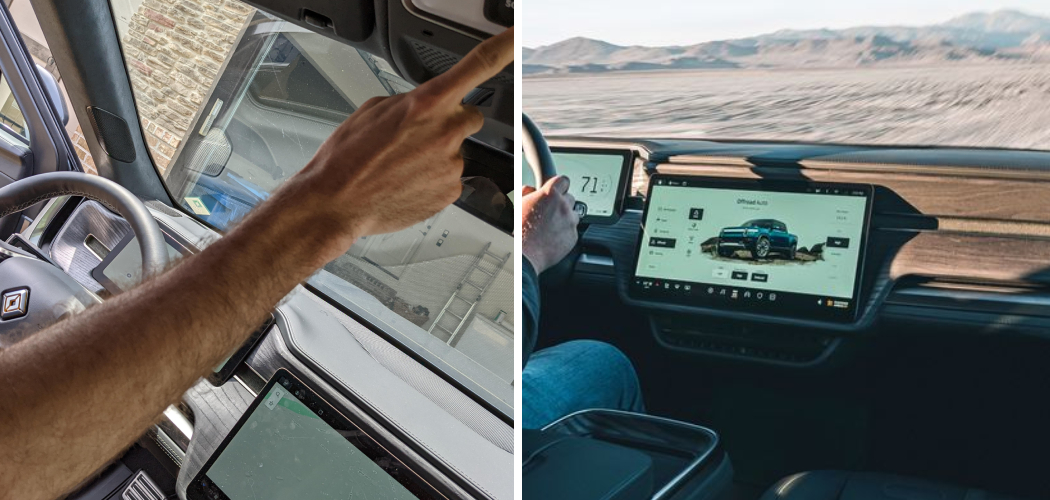Performing a hard reset on your Rivian vehicle can often resolve issues that aren’t fixed by a standard restart, such as persistent infotainment glitches or unusual electronic behaviors. This process forcibly powers down and restarts the vehicle’s systems, acting as a ‘reboot’ for the sophisticated electrical components.
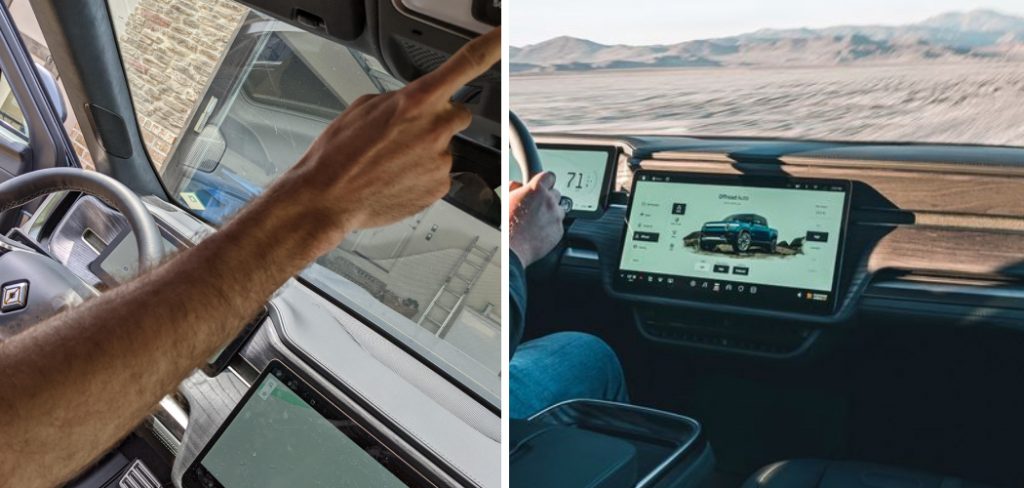
Before you begin, ensure your Rivian is parked in a safe location and that you understand this reset method will temporarily disable all systems. Here’s a step-by-step guide on how to hard reset rivian to help you through the process safely and effectively.
What is a Hard Reset?
A hard reset is a process that forces your vehicle to shut down and restart. It’s similar to the way you would reboot a computer or smartphone when it’s not functioning properly. A hard reset on a Rivian vehicle shuts down all systems, including the infotainment system, powertrain, and other electronic components.
This can help clear any temporary issues or glitches that may be causing problems with your vehicle.
What is Rivian?
Rivian is an American electric vehicle manufacturer that specializes in producing high-performance, all-electric trucks and SUVs. The company was founded in 2009 and has gained popularity for its innovative designs and commitment to sustainability. Rivian’s vehicle lineup includes the R1T pickup truck and the R1S SUV, both of which boast impressive specs and features.
With advanced technology and sleek designs, Rivian is quickly becoming a top competitor in the EV market.
Why Perform a Hard Reset?

A hard reset on your Rivian can be helpful for several reasons. It can fix issues with the infotainment system, powertrain, or other electronic components that may not be resolved by simply restarting the vehicle. In some cases, a hard reset may even save you a trip to the dealership for repairs.
Additionally, it’s a good idea to perform a hard reset if you notice any unusual behaviors or malfunctions with your vehicle. This process is also recommended before performing any software updates or changes to the vehicle’s systems.
Needed Tools and Materials
Before you begin the hard reset process, make sure you have the following tools and materials ready:
A Safe Location to Park Your Rivian Vehicle
Ensure that your vehicle is parked in a safe location with enough space to perform the hard reset without any obstructions.
Owner’s Manual
It’s always a good idea to consult your owner’s manual before attempting any procedures on your vehicle. The manual may have specific instructions or precautions for performing a hard reset on your Rivian.
Ignition Key (Optional)
Some Rivian vehicles may require the use of an ignition key to perform a hard reset. Check your owner’s manual to see if this applies to your model.
12 Step-by-step Guidelines on How to Hard Reset Rivian
Step 1: Consult the Owner’s Manual
Refer to the owner’s manual or contact Rivian customer support to obtain specific instructions for performing a hard reset on your vehicle model. The manual may provide step-by-step instructions or recommend certain procedures to follow. If you are unsure about any of the steps, contact Rivian customer support for assistance.
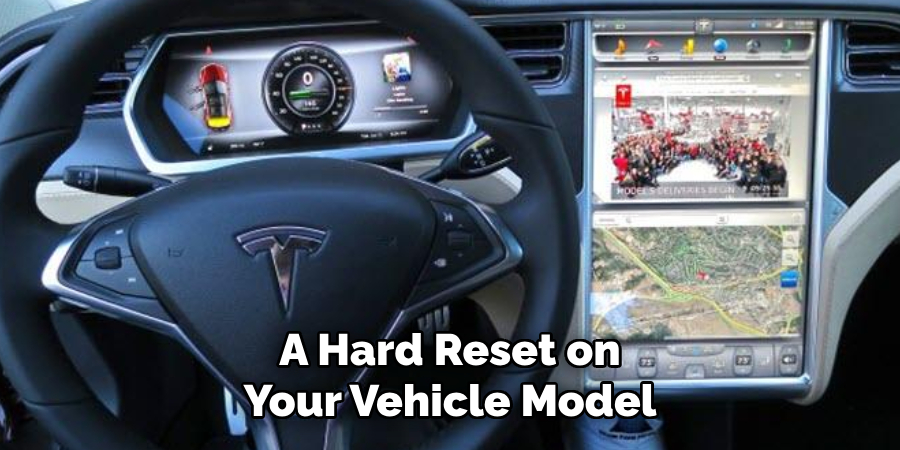
It’s always better to err on the side of caution when dealing with your vehicle’s electronics. You can also watch online tutorials or seek guidance from a certified technician.
Step 2: Park the Vehicle Safely
Park the vehicle in a safe location and ensure the transmission is in “Park” (for automatic transmissions) or “Neutral” (for manual transmissions). Engage the parking brake to prevent the vehicle from moving during the reset process. The vehicle should also be stationary and turned off. It’s important to take these precautions for your safety and the safety of others.
You don’t want the vehicle to move or start unexpectedly during the reset process. But, if you do need to access the vehicle’s systems while it’s in motion, consult the owner’s manual for specific instructions.
Step 3: Turn Off the Vehicle
Turn off the vehicle’s ignition and remove the key from the ignition switch, if applicable. For electric vehicles like those produced by Rivian, ensure that the vehicle is completely powered down. How you do this depends on your model, so refer to the owner’s manual for specific instructions. It’s essential to make sure the vehicle is turned off completely before proceeding with the hard reset.
The last thing you want is for any systems to be still running during the reset process. It could cause further issues or potential safety hazards.
Step 4: Disconnect the Power Source
If recommended in the owner’s manual, disconnect the vehicle’s main power source. This may involve disconnecting the battery or performing a similar action to cut off power to the vehicle’s electrical systems. You may need specific tools or knowledge to disconnect the power source safely.
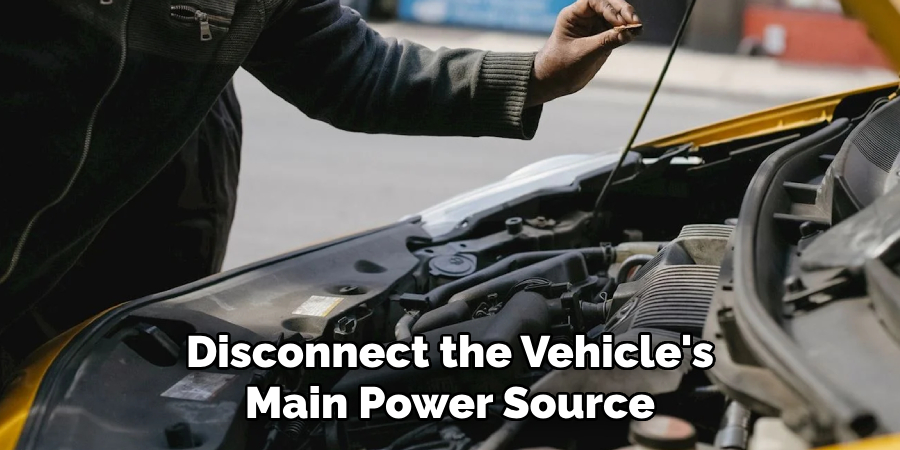
If you are unsure, it’s best to leave this step to a certified technician. Although it may seem like an inconvenience, disconnecting the power source ensures that all systems are shut down completely and can help prevent any potential hazards during the reset process.
Step 5: Wait for a Few Minutes
Allow the vehicle to sit without power for a few minutes. This will ensure that all systems are fully powered down and any residual energy dissipates. It’s a good idea to take this time to gather your tools and materials or review the next steps. It’s important not to rush through the hard reset process, as it could affect the effectiveness of the reset.
You want to give your vehicle enough time to fully reset and clear out any temporary issues or glitches. The amount of time may vary depending on your vehicle model, so refer to the owner’s manual for specific recommendations.
Step 6: Reconnect the Power Source
Reconnect the vehicle’s main power source, following any specific instructions provided in the owner’s manual. Take care to reconnect the battery or power source securely to prevent electrical issues. But, be sure to follow the instructions precisely as disconnecting and reconnecting the power source can vary by vehicle model.
If you are unsure about how to do this correctly, consult a certified technician for assistance. The last thing you want is to cause any damage or additional issues with your vehicle’s systems.
Step 7: Power On the Vehicle
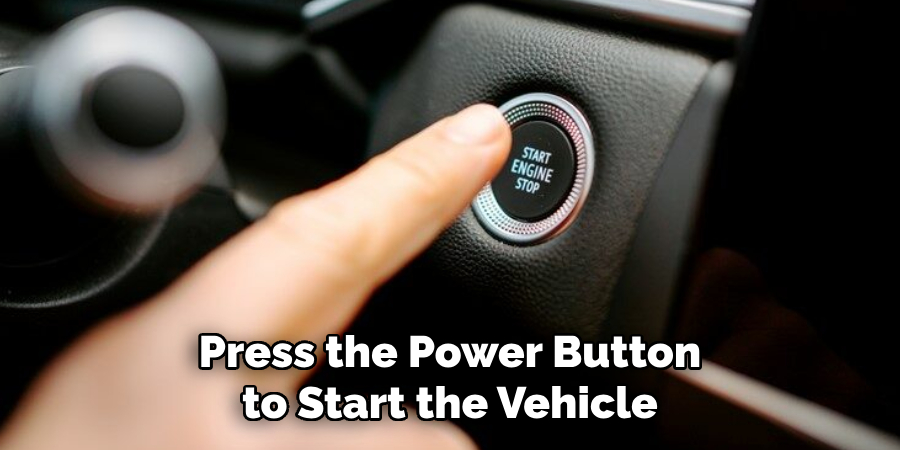
Turn on the vehicle’s ignition or press the power button to start the vehicle. Allow the vehicle’s systems to initialize and boot up fully. This may take a few minutes, so be patient. The vehicle may also emit some sounds or signals during this process, which is normal. If the vehicle does not start or systems do not initialize properly, consult the owner’s manual for troubleshooting steps.
It’s possible that there may be an issue with your vehicle that requires further attention. If this is the case, contact Rivian customer support or take your vehicle to a certified technician for assistance.
Step 8: Check for Reset
Once the vehicle is powered on, check to see if the reset was successful. Verify that any issues or malfunctions you were experiencing have been resolved. The vehicle’s systems should be functioning properly and any error codes should no longer be present. If the reset is successful, you can remove any diagnostic tools or materials used during the process.
But, if the issues persist, refer to the owner’s manual for further troubleshooting steps or seek assistance from Rivian customer support. You may need to repeat the hard reset process or take your vehicle in for professional maintenance.
Step 9: Test Drive
If applicable and safe to do so, take the vehicle for a test drive to ensure that all systems are functioning properly after the reset. This will allow you to check for any potential issues or malfunctions that may have gone undetected during the reset process. If everything seems to be working correctly, you can continue using your vehicle as usual.
But, if any issues persist or new ones arise, contact Rivian customer support or take your vehicle in for professional maintenance. The hard reset process should have resolved any temporary issues, but it’s always best to err on the side of caution and seek assistance if needed.
Step 10: Monitor for Recurrence
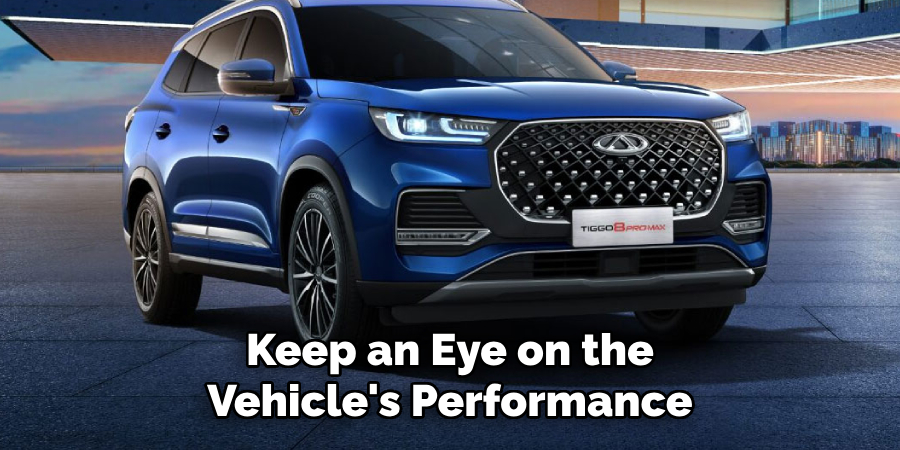
Keep an eye on the vehicle’s performance in the days following the reset. If the issue reoccurs or if you encounter any new issues, consider contacting Rivian customer support or seeking assistance from a certified technician. Although the hard reset process can resolve temporary issues, it’s possible that there may be an underlying problem with your vehicle that requires further attention.
It’s important to address any potential issues promptly for your safety and the longevity of your vehicle. Remember, always consult the owner’s manual for specific instructions and recommendations when performing a hard reset on your Rivian or any other vehicle mode.
Step 11: Document the Procedure
Document the steps you took to perform the hard reset for future reference. This can be helpful if you need to perform a reset again or if you need to provide information to Rivian customer support or a technician.
It’s also a good idea to keep track of any issues or malfunctions you experienced and how the reset affected them. This information can help with future troubleshooting efforts and may provide insights into potential recurring problems. Keeping detailed records can save time and hassle in the long run, so don’t skip this step!
Step 12: Follow Up if Necessary
If the issue persists or if you have any concerns about the vehicle’s performance, don’t hesitate to follow up with Rivian customer support or schedule a service appointment at an authorized service center. They can provide further assistance and address any underlying issues with the vehicle.
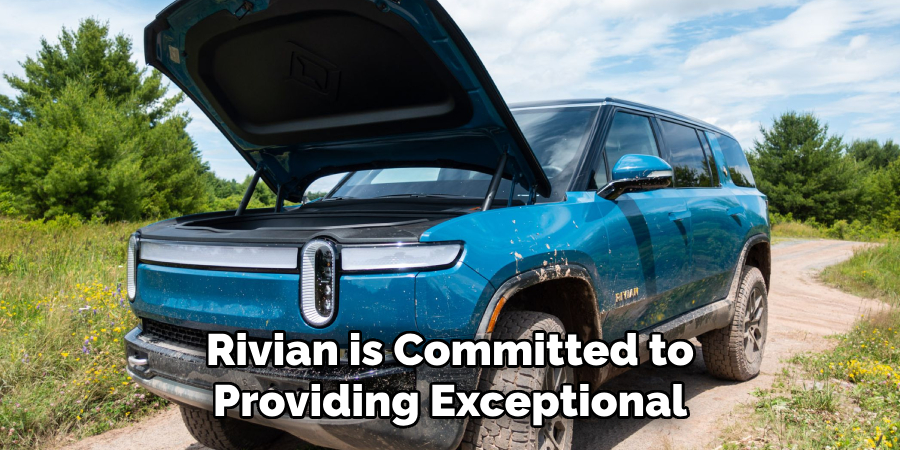
It’s always better to be safe than sorry when it comes to the safety and functionality of your vehicle. Rivian is committed to providing exceptional customer service and support, so don’t hesitate to reach out with any questions or concerns.
Following these steps and guidelines on how to hard reset rivian can help ensure a successful hard reset of your Rivian or any other vehicle model. Remember to always refer to the owner’s manual for specific instructions and recommendations, and seek assistance from professionals if needed. With proper care and maintenance, your vehicle will provide reliable performance for years to come.
Do You Need to Take Help From a Professional?
If you are unsure about performing a hard reset on your own or if the issue persists after following all the steps, it’s always best to seek assistance from a certified technician. They have the knowledge and expertise to diagnose and address any underlying issues with your vehicle. You can also contact Rivian customer support for guidance and recommendations.
Don’t hesitate to reach out for help when it comes to the safety and functionality of your vehicle. With proper care and attention, your Rivian will provide reliable performance for many adventures ahead! So, be sure to follow these steps carefully and enjoy your journey with peace of mind, knowing that you have the knowledge and resources to perform a hard reset when needed.
Troubleshooting Common Hard Reset Issues
Even with proper instructions and guidelines, there may be some common issues that arise during a hard reset. Here are a few troubleshooting tips to help address these problems:
The Vehicle is Not Responding or Starting After the Hard Reset:

If your vehicle does not start or respond after performing a hard reset, double-check all of the connections and make sure they are secure. It’s possible that a loose connection may be preventing the vehicle from starting. If this does not resolve the issue, consult the owner’s manual for further troubleshooting steps or seek assistance from Rivian customer support.
Error Codes are Still Present After the Hard Reset:
If error codes are still present after performing a hard reset, check to see if there is an underlying issue with your vehicle that requires professional maintenance. It’s possible that the hard reset may have resolved temporary issues, but there may be an underlying problem that needs to be addressed.
Consult the owner’s manual for specific instructions on how to address error codes or seek assistance from a certified technician.
The Vehicle is Experiencing New Issues After the Hard Reset:
If you notice new issues with your vehicle after performing a hard reset, document the issues and contact Rivian customer support for further assistance. It’s possible that there may have been an underlying problem with your vehicle that was temporarily masked by the hard reset process.
They can help address any new issues or provide guidance on how to troubleshoot them.
Frequently Asked Questions
Q: How Long Does a Hard Reset Typically Take?
A: The amount of time required for a hard reset can vary depending on the specific vehicle model. Refer to the owner’s manual for recommended reset times. The process typically takes a few minutes, but it may take longer for certain vehicles. It’s important to be patient and allow the vehicle’s systems to fully initialize before testing for any issues.
Q: Will a Hard Reset Affect Any Saved Settings or Data?
A: Yes, a hard reset will usually erase any saved settings or data on the vehicle. This includes things like radio presets, navigation destinations, and personalization settings. It’s important to document any saved information before performing a hard reset so you can easily restore it after the process is complete.
Q: Can I Perform a Hard Reset on My Own?
A: Yes, you can perform a hard reset on your own as long as you follow the correct steps and precautions outlined in the owner’s manual. However, if you feel uncomfortable or unsure about performing a hard reset yourself, it’s always best to seek assistance from a certified technician.
They can ensure the process is performed correctly and address any underlying issues with your vehicle.
Q: What Should I Do if the Hard Reset Doesn’t Resolve the Issue?
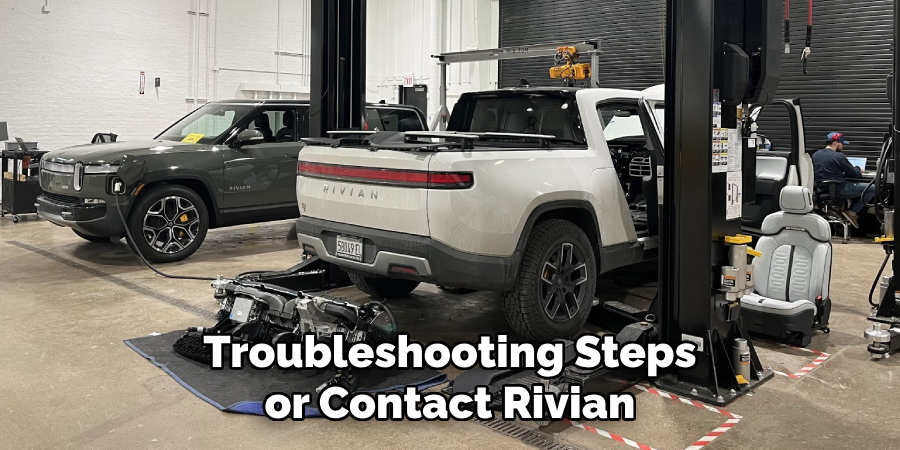
A: If the hard reset doesn’t resolve the issue, refer to the owner’s manual for further troubleshooting steps or contact Rivian customer support. They can provide guidance and assistance with resolving any persistent issues with your vehicle. It’s important to address any ongoing problems promptly for your safety and the health of your vehicle.
Overall, a hard reset is a useful tool for addressing temporary issues with your vehicle’s systems. By following these steps and guidelines, you can safely and effectively perform a hard reset on your Rivian or any other vehicle model.
Remember to always refer to the owner’s manual for specific instructions and recommendations, and seek assistance from professionals if needed. With proper care and maintenance, your vehicle will provide reliable performance for the year
Conclusion
A hard reset may be a potent tool for addressing unresponsive systems in your Rivian vehicle, but it’s essential to use this procedure judiciously. It should not be a regular part of your vehicle maintenance but rather a considered response to specific and persistent system issues.
If, after performing a hard reset, you find that problems persist, it is advisable to contact Rivian customer support or schedule a service appointment with a certified technician. Remember, regular updates and proper maintenance are the best way to ensure your vehicle operates at its best. Thanks for reading this article on how to hard reset rivian.

